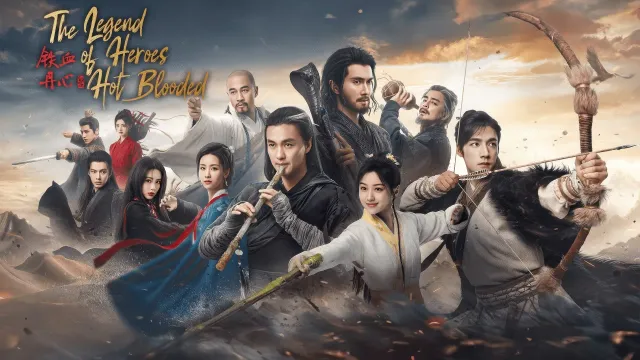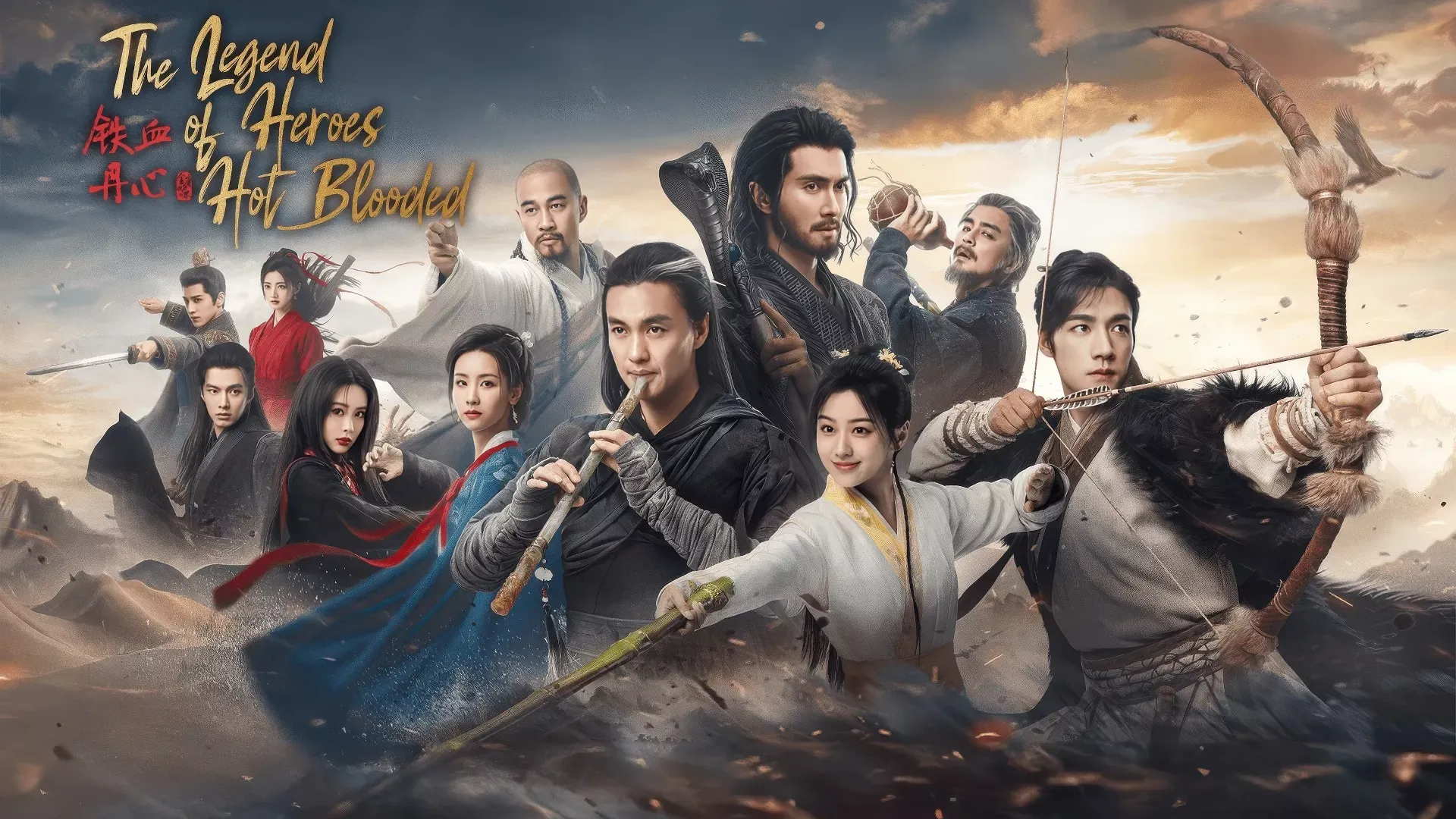The turbulent world of The Legend of the Condor Heroes unfolds during a period of constant warfare and political upheaval. Set primarily during the Southern Song Dynasty,1 the factions navigate the complex geopolitical landscape involving the Jin Empire,[^jinempire] the rising Mongol Empire,2 and the independent Dali Kingdom.3 From the orthodox Quanzhen Order to the massive Beggars’ Guild, from the eccentric Peach Blossom Island to the legendary Five Greats, these factions shape the martial arts world as external pressures threaten to reshape China itself.
Notable factions
Quanzhen Order
The Quanzhen Order (全真教 – Quánzhēn Jiào) was one of the most influential orthodox factions in the jianghu4 during the Southern Song period. Founded by Wang Chongyang, the Central Divine of the Five Greats, this Daoist martial-monastic order combined religious cultivation with martial arts training. Based primarily on Zhongnan Mountains, the Order was led by the Seven Zis of Quanzhen after Wang Chongyang’s death.
The Order emphasised qi cultivation and defensive martial arts techniques, reflecting Daoist principles of yielding to overcome force. Under leaders like Ma Yu, Qiu Chuji, and Wang Chuyi, Quanzhen established numerous sub-schools including the Namo School, Qingjing School, and Huashan School. Their Big Dipper Formation became legendary for allowing the Seven Masters to combine their martial skills.
As one of the most respected orthodox martial arts schools, the Quanzhen Order represented traditional Chinese martial arts values and played a crucial role in maintaining order in the jianghu while training numerous disciples who would go on to influence the martial arts world for generations.
Beggars’ Guild
The Beggars’ Guild (丐帮 – Gàibāng) was the largest martial arts organisation in China, with millions of members spanning from the Yangtze River to beyond the Great Wall. Led by Hong Qigong, the Northern Beggar of the Five Greats, the Guild operated a vast intelligence network whilst maintaining its mission to help the poor and downtrodden.
The Guild was divided into two main factions: the Clean Clothes Faction (净衣派) of more prosperous members who supported the Guild through legitimate means, and the Dirty Clothes Faction (污衣派) who maintained the traditional beggar appearance. Hong Qigong’s mastery of the Eighteen Palms of Dragon-subduing and the guild’s exclusive Dog-beating Staff Technique made them formidable allies or enemies.
The Beggars’ Guild’s extensive network and commitment to helping the disadvantaged made them a crucial force in the jianghu, with their intelligence-gathering capabilities and martial prowess playing key roles in the novel’s major conflicts.
Peach Blossom Island
Peach Blossom Island (桃花岛 – Táohuā Dǎo) served as the isolated stronghold of Huang Yaoshi, the Eastern Heretic of the Five Greats. Located in the East China Sea, this mysterious island became famous for its unconventional martial arts and the tragic love story between Huang Yaoshi and his deceased wife Feng Heng.
Huang Yaoshi’s eccentric nature and unorthodox methods often put him at odds with mainstream martial arts society. His disciples included the notorious Twin Evils of Dark Wind - Chen Xuanfeng and Mei Chaofeng - who stole parts of the Nine Yin Manual and terrorised the jianghu with their deadly techniques. His daughter Huang Rong would later become one of the most influential figures in the martial arts world.
Five Greats
The Five Greats (江湖五绝 – Jiānghú Wǔjué) represented the pinnacle of martial arts achievement during the Southern Song period. These five supreme masters - Wang Chongyang (Central Divine), Huang Yaoshi (Eastern Heretic), Ouyang Feng (Western Venom), Hong Qigong (Northern Beggar), and Duan Zhixing (Southern Emperor) - established their rankings through the famous Huashan Sword Summit competition.
Their rivalry over the Nine Yin Manual drove much of the novel’s conflict, whilst their individual philosophies and martial arts styles influenced entire generations of practitioners. The competition between these masters, and later their successors, shaped the balance of power throughout the jianghu and influenced major historical events.
Duan Clan of Dali
The Duan Clan of Dali (大理段氏 – Dàlǐ Duàn Shì) ruled the independent Dali Kingdom in southwestern China, maintaining an unusual balance between political power and Buddhist cultivation. The clan’s tradition required rulers to eventually abdicate and become Buddhist monks, with Duan Zhixing (later known as Emperor Yideng) serving as the Southern Emperor among the Five Greats.
Their signature martial art, the One Yang Finger, was renowned throughout the jianghu for its precision and power. The clan’s deep Buddhist faith influenced their governance style and martial arts philosophy, making them respected mediators in conflicts between other factions whilst maintaining their kingdom’s independence from both Song and foreign powers.
Guilds and societies
- Beggars’ Guild 丐帮
- Clean Clothes Faction 净衣派
- Dirty Clothes Faction 污衣派
- Iron Palm Keep 铁掌帮
- Yellow River Brotherhood 黄河帮
- Huaiyang Bandits 淮阳帮
Philosophical and religious orders
- Shaolin Order 少林派
- Quanzhen Order 全真教
Martial arts schools
Strongholds and palaces
- Peach Blossom Island 桃花岛
- White Camel Manor 白驼山庄
- Manor of Gathering Clouds 归云庄
- Lu Family Manor 陆家庄
- Prince Zhao’s Estate 赵王府
Legendary groups
- Five Greats 江湖五绝
- Seven Eccentrics of Jiangnan 江南七怪
- Twin Evils of Dark Wind 黑风双煞
- Four Ghosts of Yellow River 黄河四鬼
Tribal confederations
- Borjigin Tribe 孛儿只斤
- Kiyat Clan 乞颜部
- Keraites Khanate 克烈部
- Jadaran Tribe 札达兰部
Political entities
- Song Dynasty 宋朝
- Northern Song 北宋
- Southern Song 南宋
- Jin Dynasty 金朝
- Mongol Empire 蒙古帝国
- Dali Kingdom 大理国
- Duan Clan of Dali 大理段氏
- Khwarezmian Empire 花剌子模国
- Western Regions 西域
See also
- Legend of the Condor Heroes characters
- Jin Yong factions
- Demi-Gods and Semi-Devils factions
- Return of the Condor Heroes factions
- Heavenly Sword and Dragon Sabre factions
- Laughing in the Wind factions
- Ode to Gallantry factions
- Sword Stained with Royal Blood factions
- The Deer and the Cauldron factions
- The Book and the Sword factions
- Side Story of the Flying Fox factions
- Flying Fox of the Snowy Mountain factions
Footnotes
-
南宋 – Nán Sòng. Period of the Song Dynasty that lasted from 1127 to 1279 CE, forced to move its capital south after the loss of northern China to the Jin Empire. See Wikipedia. ↩
-
蒙古帝国 – Ménggǔ Dìguó. Rising nomadic empire under Genghis Khan that would eventually conquer both Jin and Song. See Wikipedia. ↩
-
大理国 – Dàlǐ Guó. Kingdom in southwest China, modern-day Yunnan, ruled by the Bai people of the Duan Clan from 937 to 1253 CE. See Wikipedia. ↩
-
江湖 – jiānghú. The world of martial arts. A sub-society involving all who are related to the martial arts scene. What is jianghu? ↩

